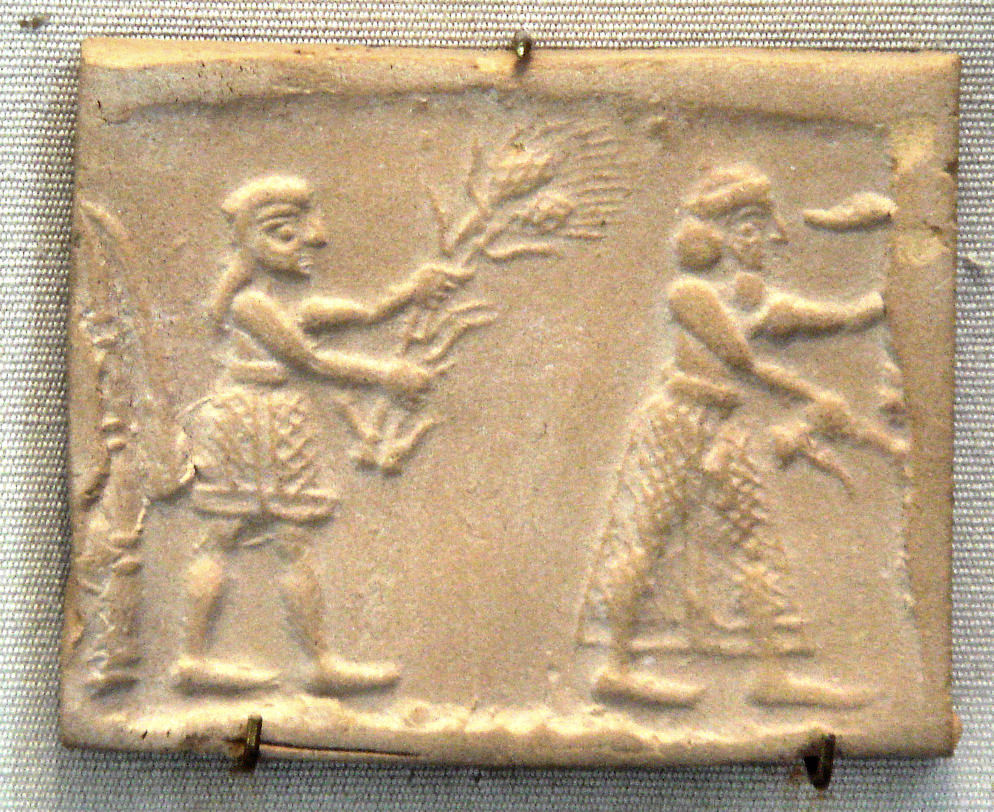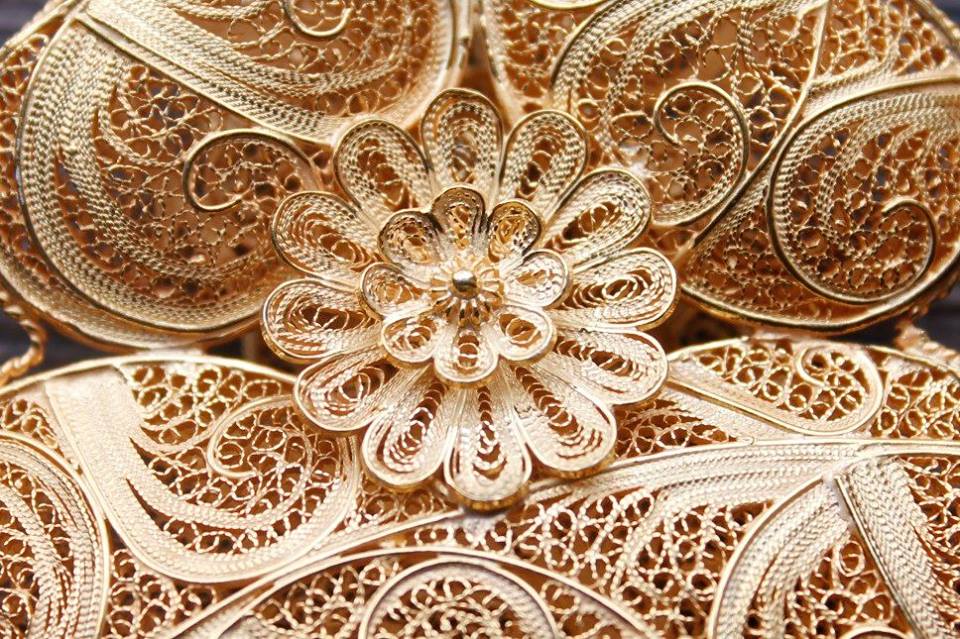|
Aannepadda
A'annepada (; ) was a king of the First Dynasty of Ur. He was a son of Mesannepada. It is thought that his tomb may be tomb PG 580 in the Royal Cemetery at Ur. Votive tablets Several tablets are known that bear his name, in particular dedicated to Ninhursag, and proclaiming Mesannepada as his father: Foundation cone A foundation cone in a copper alloy was found in Ur, bearing the name of "King A'annepada" in a dedication for Inanna, now in the British Museum (BM 90951). The cone was discovered by John Taylor in 1854 during his excavations in Ur. It has a length of 34.3 centimeters, a diameter of 3.7 centimeters, and weighs 1.7 kilograms. According to the British Museum, it was found together with two other objects, a carved stone with handle and a lapis lazuli portrait, which together probably formed a foundation deposit. Museum notice The actual content of the inscription had been overlooked, until it was published by J.C. Gadd in 1928. File:Plaque with woman face BM 122 ... [...More Info...] [...Related Items...] OR: [Wikipedia] [Google] [Baidu] |
Mesannepada
Mesannepada (, [MES-AN-NE2-PAD3-DA]), Mesh-Ane-pada or Mes-Anne-pada ("Youngling chosen by An"; died ) was the first king listed for the First Dynasty of Ur on the Sumerian king list. He is listed to have ruled for 80 years, having overthrown Lugal-kitun of Uruk: "Sumerian King List, Then Unug (Uruk) was defeated and the kingship was taken to Urim (Ur)". In one of his seals, found in the Royal Cemetery at Ur, he is also described as king of Kish (Sumer), Kish. Filiation The "Treasure of Ur" discovered in Mari Mesannepada was a son of Meskalamdug. A lapis-lazuli bead with the name of King Meskalamdug was found in Mari, Syria, Mari, in the so-called "Treasure of Ur", and reads:Description with photograph: File:UNESCO Lapis lazuli bead, National Museum of Damascus, Syria.jpg, The lapis lazuli bead from Mari, National Museum of Damascus, Syria ("King of Ur", side) File:Mesannepada bead from Mari.jpg, Transcription of the Mari bead Initially, it was thought that this bead (re ... [...More Info...] [...Related Items...] OR: [Wikipedia] [Google] [Baidu] |
Sumerian Kings
The history of Mesopotamia extends from the Lower Paleolithic period until the establishment of the Caliphate in the late 7th century AD, after which the region came to be known as Iraq. This list covers dynasties and monarchs of Mesopotamia up until the fall of the Neo-Babylonian Empire in 539 BC, after which native Mesopotamian monarchs never again ruled the region. The earliest records of writing are known from the Uruk period (or "Protoliterate period") in the 4th millennium BC, with documentation of actual historical events, and the ancient history of the region, being known from the middle of the third millennium BC onwards, alongside cuneiform records written by early kings. This period, known as the Early Dynastic Period, is typically subdivided into three: 2900–2750 BC (ED I), 2750–2600 BC (ED II) and 2600–2350 BC (ED III), and was followed by Akkadian (~2350–2100 BC) and Neo-Sumerian (2112–2004 BC) periods, after which Mesopotamia was most often divided betwee ... [...More Info...] [...Related Items...] OR: [Wikipedia] [Google] [Baidu] |
26th-century BC Sumerian Kings
The 6th century is the period from 501 through 600 in line with the Julian calendar. In the West, the century marks the end of Classical Antiquity and the beginning of the Middle Ages. The collapse of the Western Roman Empire late in the previous century left Europe fractured into many small Germanic kingdoms competing fiercely for land and wealth. From the upheaval the Franks rose to prominence and carved out a sizeable domain covering much of modern France and Germany. Meanwhile, the surviving Eastern Roman Empire began to expand under Emperor Justinian, who recaptured North Africa from the Vandals and attempted fully to recover Italy as well, in the hope of reinstating Roman control over the lands once ruled by the Western Roman Empire. Owing in part to the collapse of the Roman Empire along with its literature and civilization, the sixth century is generally considered to be the least known about in the Dark Ages. In its second golden age, the Sassanid Empire reached the ... [...More Info...] [...Related Items...] OR: [Wikipedia] [Google] [Baidu] |
Ensí
Ensi (cuneiform: , "lord of the plowland"; Emesal dialect: ''umunsik''; ) was a Sumerian title designating the ruler or prince of a city-state. Originally it may have designated an independent ruler, but in later periods the title presupposed subordinance to a lugal. For the Early Dynastic Period (about 2800–2350 BC), the meaning of the titles en, ensi and lugal cannot be differentiated clearly: see lugal, ensi and en for details. Ensi may have originally been a designation of the ruler restricted to Lagash and Umma. The ''ensi'' was considered a representative of the city-state's patron deity. In later periods, an ensi was normally seen as subordinate to a lugal. Nevertheless, even the powerful rulers of the Second Dynasty of Lagash () such as Gudea were satisfied with the title ensi. During the Third Dynasty of Ur (about 2100–2000 BC) ensi referred to the provincial governors of the kingdom. These exercised great powers in terms of government, tax revenue and juris ... [...More Info...] [...Related Items...] OR: [Wikipedia] [Google] [Baidu] |
King Of Sumer
The ''Sumerian King List'' (abbreviated ''SKL'') or ''Chronicle of the One Monarchy'' is an ancient Composition (language), literary composition written in Sumerian language, Sumerian that was likely created and redacted to legitimize the claims to power of various city-states and kingdoms in southern Mesopotamia during the late third and early second millennium BC. It does so by repetitively listing Sumerian cities, the kings that ruled there, and the lengths of their reigns. Especially in the early part of the list, these reigns often span thousands of years. In the oldest known version, dated to the Third Dynasty of Ur, Ur III period () but probably based on Akkadian Empire, Akkadian source material, the ''SKL'' reflected a more linear transition of power from Kish (Sumer), Kish, the first city to receive kingship, to Akkad (city), Akkad. In later versions from the Old Babylonian Empire, Old Babylonian period, the list consisted of a large number of cities between which kingshi ... [...More Info...] [...Related Items...] OR: [Wikipedia] [Google] [Baidu] |
Cloisonné
Cloisonné () is an ancient technology, ancient technique for decorating metalwork objects with colored material held in place or separated by metal strips or wire, normally of gold. In recent centuries, vitreous enamel has been used, but inlays of cut gemstones, glass and other materials were also used during older periods; indeed cloisonné enamel very probably began as an easier imitation of cloisonné work using gems. The resulting objects can also be called cloisonné. The decoration is formed by first adding compartments (''cloisons'' in French) to the metal object by soldering or affixing silver or gold as wires or thin strips placed on their edges. These remain visible in the finished piece, separating the different compartments of the enamel or inlays, which are often of several colors. Cloisonné enamel objects are worked on with enamel powder made into a paste, which then needs to be fired in a kiln. If gemstones or colored glass are used, the pieces need to be cut o ... [...More Info...] [...Related Items...] OR: [Wikipedia] [Google] [Baidu] |
Filigree
Filigree (also less commonly spelled ''filagree'', and formerly written ''filigrann'' or ''filigrene'') is a form of intricate metalwork used in jewellery and other small forms of metalwork. In jewellery, it is usually of gold and silver, made with tiny beads or twisted threads, or both in combination, soldered together or to the surface of an object of the same metal and arranged in artistic motifs. It often suggests lace and remains popular in Indian and other Asian metalwork. It was popular as well in Italian, French and Portuguese metalwork from 1660 to the late 19th century. It should not be confused with ajoure jewellery work, the ajoure technique consisting of drilling holes in objects made of sheet metal. The English word filigree is shortened from the earlier use of ''filigreen'' which derives from Latin meaning thread and grain, in the sense of small bead. The Latin words gave ''filigrana'' in Italian which itself became ''filigrane'' in 17th-century Frenc ... [...More Info...] [...Related Items...] OR: [Wikipedia] [Google] [Baidu] |
The Babylonian Marriage Market
''The Babylonian Marriage Market'' is an 1875 painting by the British painter Edwin Long. It depicts a scene from Herodotus, Herodotus' Histories (Herodotus), ''Histories'' of young women being auctioned into marriage in the area then known as Babylon or Assyria. It received attention for its provocative depiction of women. Long's use of historical detail to make the painting engaging yet relatable has been highly regarded. The work was purchased by Thomas Holloway in 1882 and is owned by Royal Holloway, University of London. Artist's background Edwin Long was a portrait painter who was highly reclusive, shying away from public appearances and publicity.M.H. Speilman, “Painters in their Studios”, ''The Graphic, June 9, 188, 21''Imogen Hart, “The Politics of Possession: Edwin Long’s Babylonian Marriage Market.” ''Art history'' 35, no. 1 (2012): 87 He is noted to have painted more large-scale paintings than any of his peers from the Royal Academy of Arts, English Royal A ... [...More Info...] [...Related Items...] OR: [Wikipedia] [Google] [Baidu] |
Elamite
Elamite, also known as Hatamtite and formerly as Scythic, Median, Amardian, Anshanian and Susian, is an extinct language that was spoken by the ancient Elamites. It was recorded in what is now southwestern Iran from 2600 BC to 330 BC. Elamite is generally thought to have no demonstrable relatives and is usually considered a language isolate. The lack of established relatives makes its interpretation difficult. A sizeable number of Elamite lexemes are known from the Achaemenid royal inscriptions – trilingual inscriptions of the Achaemenid Empire, in which Elamite was written using Elamite cuneiform (circa 5th century BC), which is fully deciphered. An important dictionary of the Elamite language, the ''Elamisches Wörterbuch'' was published in 1987 by W. Hinz and H. Koch. The Linear Elamite script however, one of the scripts used to write the Elamite language circa 2000 BC, has remained elusive until recently. in Writing system The following scripts are known or assumed to h ... [...More Info...] [...Related Items...] OR: [Wikipedia] [Google] [Baidu] |
John George Taylor
John George Taylor (active 1851–1861; also known as J E Taylor and J G Taylor) was a British official of the Foreign Office, and also an important early archaeologist investigating the antiquities of the Middle East. He was one of the first archaeologists to explore the prominent burial mounds in the area of the Persian Gulf, and he made some very important discoveries. He also worked for the British East India Company. Family He was the son of Captain (later Colonel) R.(short for Robert) Taylor, who was the British Assistant Political Agent in Basra from 1818 to 1822. Colonel R. Taylor may have been the one who originally acquired the famous Taylor prism in 1830. It was purchased from Colonel Taylor's widow in 1850 by the British Museum. Career John Taylor was appointed as Agent for the British East India Company, and the British Vice-Consul at Basra from 1851 to 1858. At Basra, he was instructed by the Mandaean ''ganzibra'' (high priest) Adam Yuhana, the father of Yahya B ... [...More Info...] [...Related Items...] OR: [Wikipedia] [Google] [Baidu] |






